Cabaret Rouge Cemetery – How to Stay Sane While Visiting
Liberation Tour 2015 started the day with a visit to the Vimy Ridge Monument after which we visited the trenches and tunnels of the battlefield. Despite the cool damp weather, I think most people felt pretty good about visiting the monument and learning about Canada’s most famous WWI battle. From here we got on the bus and travelled a short distance to Souchez and the Cabaret Rouge Cemetery, which despite the rather enticing name (sounds like a type of wine, but was actually a cafe destroyed by shellfire in WWI), is a very solemn place. It contains the final resting place of 7,650 soldiers of whom only 3,185 are identified. Although it is officially a British cemetery there are not only Brits, but Irish, Australian, New Zealand, South African, Indian and most importantly for us, the final resting place of many of the Canadians who died at Vimy Ridge. Please join us as we end up with a pleasant surprise.
Cabaret Rouge Cemetery
As always with these Commonwealth cemeteries, Cabaret Rouge Cemetery has a tranquil symmetry and the dead do rest in peace among the flowers and shrubs.
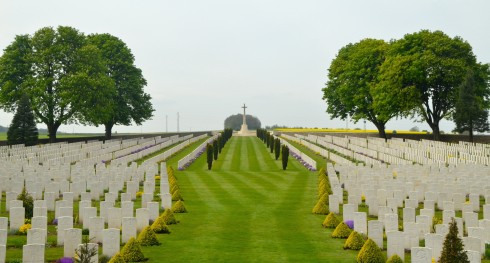
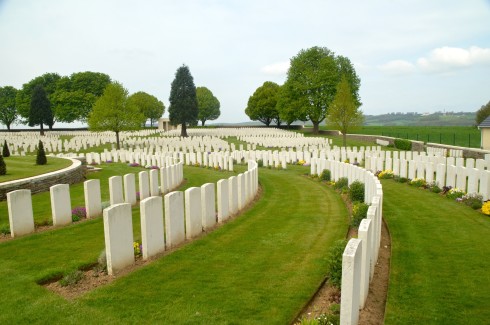
John Cannon, our tour leader, guides us to this surprising grave marker. I had no idea that up until 2000, Canada never actually had a Tomb of the Unknown Soldier.
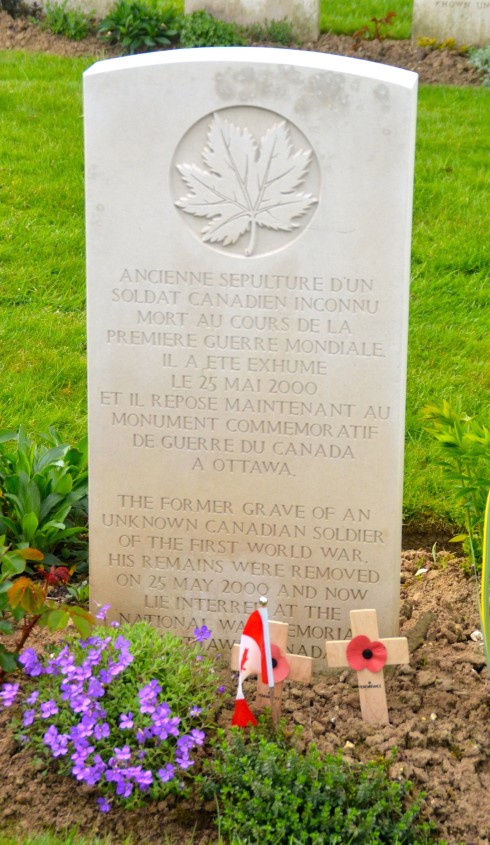
A sarcophagus was built in that year immediately in front of the National War Memorial in Ottawa and the remains of the soldier in this grave were transferred there.
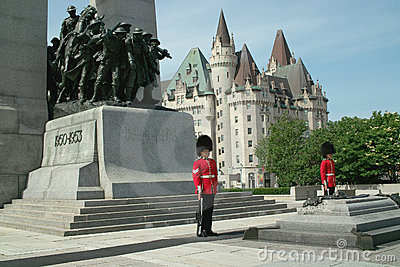
Unfortunately the tomb and memorial were desecrated on October 22, 2014 when reserve Cpl. Nathan Cirillo was murdered here while on ceremonial guard duty. There seems some terrible irony in the fact that this soldier would be repatriated from an area of unimaginable slaughter to the nation’s capital only to have this happen beside his new tomb.
There are many, many Canadian graves at Cabaret Rouge Cemetery, none sadder to see than these two. They are brothers Olivier and Wilfred Chenier, sons of Janvier Chenier of Buckingham, Quebec who both died on April 9, 1917, the first day of the Vimy Ridge attack. Incredibly they were one of three sets of Canadian brothers who died that same day at Vimy.
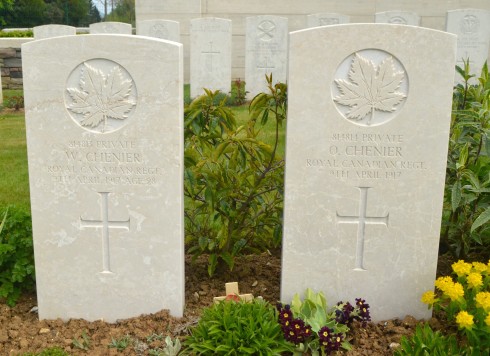
Wandering about I came across this grave, one of the 83,005 turban wearing Sikhs, who died in WWI. I well remember the controversy about whether Sikhs should be allowed to wear their turbans while serving in the RCMP. Seems pretty silly now.
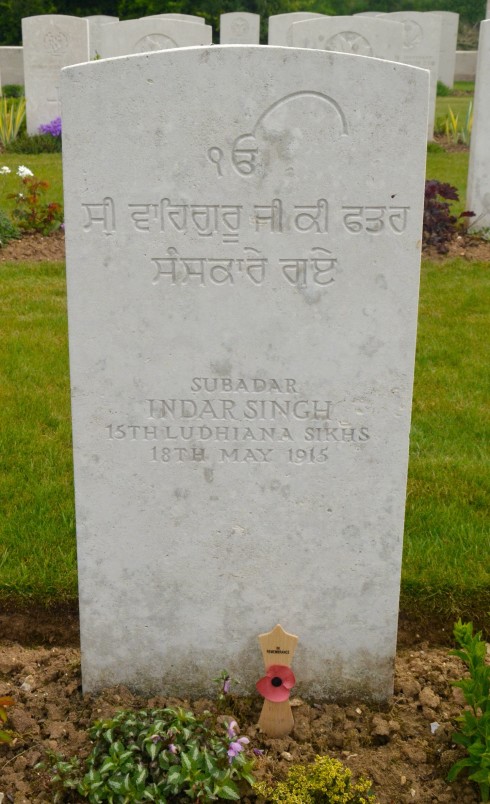
I couldn’t find out any specific information about this man, but I did find this picture of the 15th Ludhiana Sikhs.
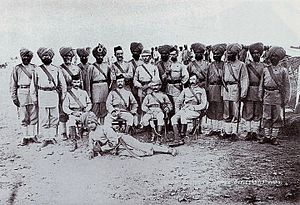
It had been a very long morning and we were all glad to be treated to an absolutely delicious lunch at L’Estraminet de Lorette. It started with a herb soup so fresh I’m sure the herbs were picked that morning, followed by one of the nicest pieces of cod I’ve ever had. The piece de resistance was this butter cream cake baked especially for us and topped with two flares. Man it was good!
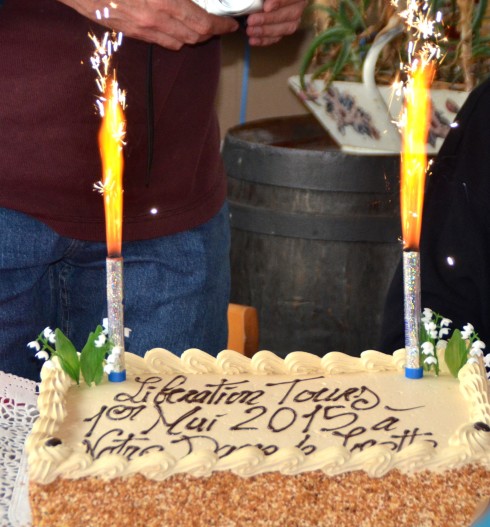
Notre Dame de Lorette
Notre Dame de Lorette might seem a strange place to find a great little country restaurant because it’s literally across the road from Ablain St. Nazaire French Military Cemetery the largest French war cemetery in the world. There are almost 40,000 dead French and colonial soldiers buried here. Like Thiepval, which we visited a few days ago, this cemetery is so vast that it is literally incomprehensible. While trying to come to grips with it, I have a flash of memory from over fifty years ago and realize I have been here before. With my faulty memory I had always assumed that the French cemetery that made such an impression on me as a 13 year old boy was at Verdun, but I realize today that it was here, near this very spot, that I first understood the futility and stupidity of war. Here I am all these years later with no better understanding now than I had then.
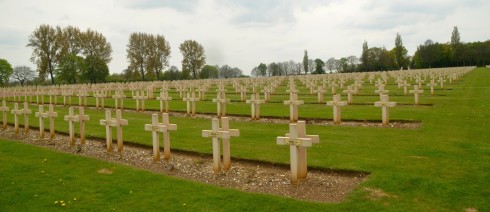
At the far end of the cemetery the crosses give way to these two types of headstones. In the foreground are Jewish graves and in the background Muslim graves. They all died fighting for a common cause. Now, 100 years later that seems unimaginable.
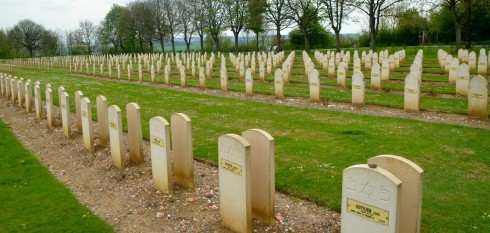
This is Isaac Fimat of the 3rd Zouaves.
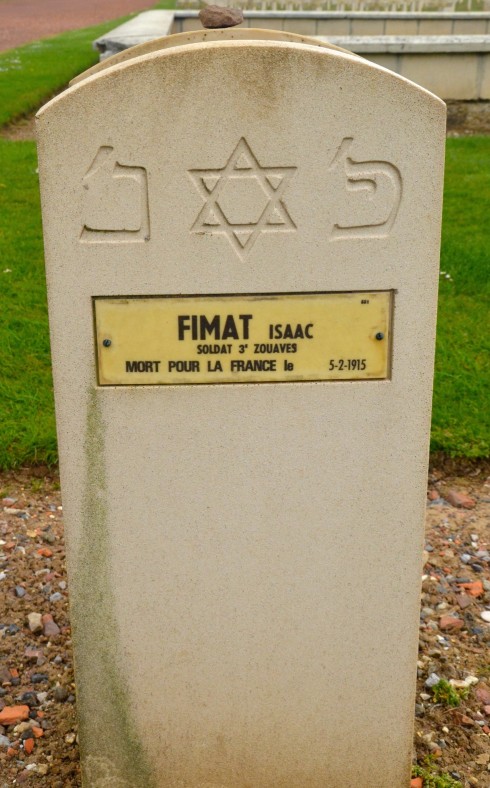
And Lakehal Mohamed Ben Ahmed who died almost four full years before the War to End All Wars would itself end. According to my research he, in all likelihood, was a Moroccan. All of the Muslim graves face east toward Mecca.
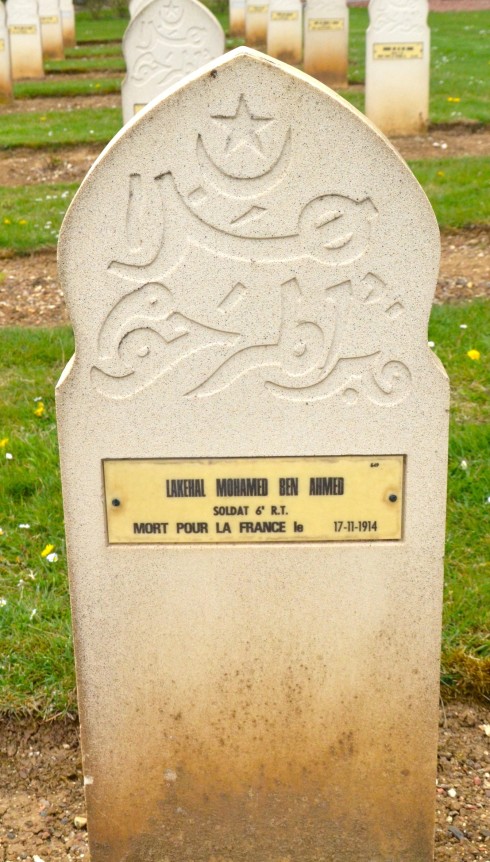
Ablain St. Nazaire has not only all the graves to depress one, but there are eight ossuaries, which are really just mass graves of unidentified soldiers. This lantern tower is built atop one of them, but the rest are just rectangular areas within the cemetery.
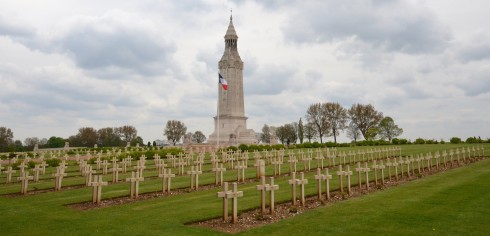
Finally there is this very nice basilica that you can make your way to as you pass by the graves.
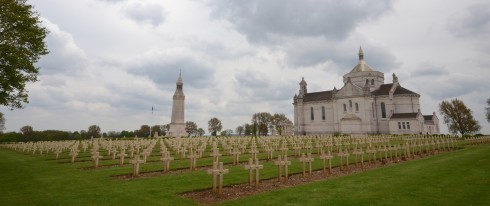
Inside you can contemplate this scene and ask yourself, “In Christ’s name, why?”
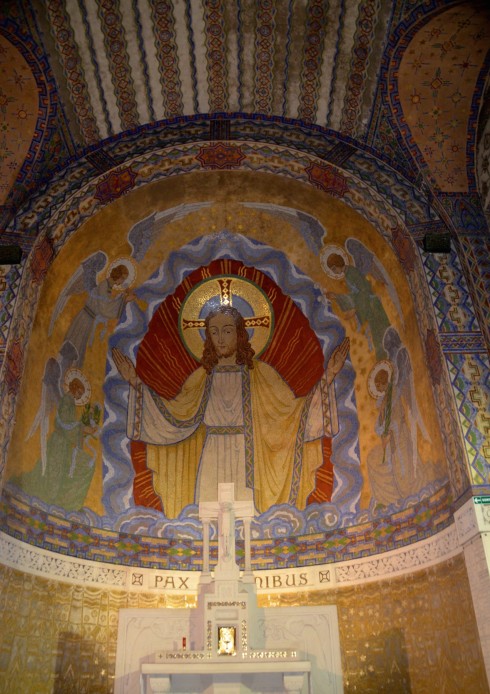
For some reason this sculpture really pissed me off. Ostensibly it is a priest looking down at a dying poilu who presumably is going to be given the last rites and ascend to heaven as a reward for serving his country. But if you look at the priest’s face there seems to be nothing but contempt. I looked at this for a long time and finally just left, shaking my head.
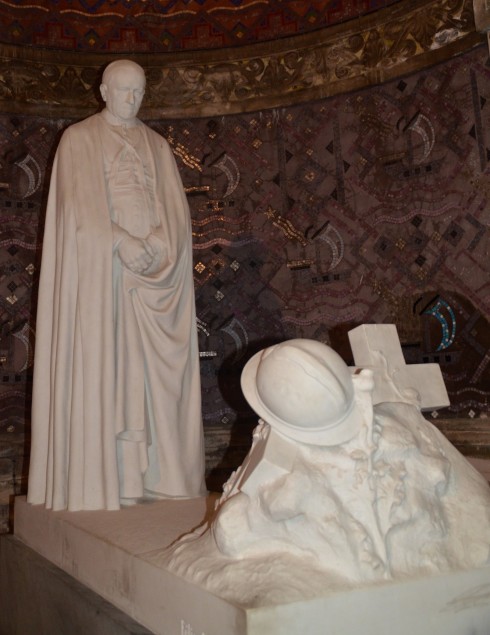
Thomas Gray wrote in Elegy Written in a Country Churchyard that ‘The paths of glory lead but to the grave‘ and I think he was right, they lead nowhere else. On that note I urge the reader to watch Stanley Kubrik’s great anti-war movie Paths of Glory to learn more about how this cemetery and others became the final resting places of hundreds of thousands of young French and colonial men.
Next we cross over into Belgium and visit Ypres, the site of five WWI battles and the first use of poison gas.

